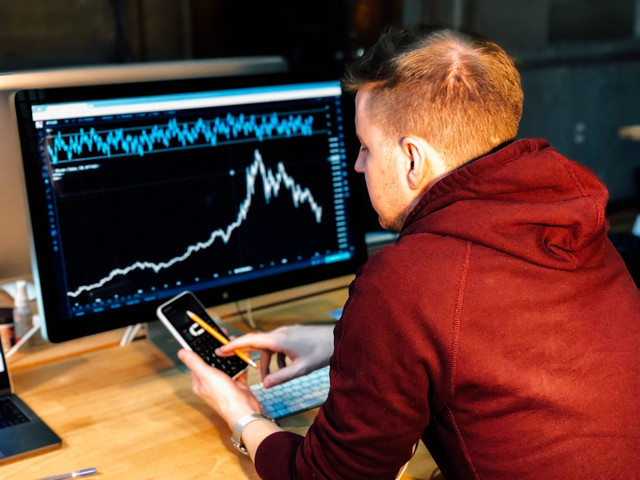Key Differences Between Futures Trading and Margin Trading
Futures trading involves agreements to buy or sell assets at a predetermined price in the future. Traders must fulfill their contractual obligations on the specified date. Margin trading, on the other hand, allows investors to borrow funds from a broker to trade securities. This form of trading requires maintaining a minimum account balance, known as the margin.
In futures trading, leverage is inherent as traders only need to put down a fraction of the contract value. This amplifies both potential profits and losses. In margin trading, leverage is also utilized, but it is based on the borrowed funds. The use of leverage in both trading methods magnifies risk and reward, making it crucial for investors to have a solid risk management strategy in place.
Discover the convenience of using a trading online app to manage your investments on the go. Stay updated with real-time market data and make trades with just a few taps on your phone.
Definition of Futures Trading and Margin Trading
Futures trading involves the exchange of financial instruments or commodities at a predetermined price on a specified future date. It allows investors to speculate on the price movements of the underlying asset without actually owning it. Traders can take long positions if they believe the price will rise or short positions if they anticipate a decline in value. Futures contracts are standardized agreements traded on organized exchanges, ensuring liquidity and price transparency.
On the other hand, margin trading is a method of buying securities using borrowed funds from a broker. Investors are required to deposit a percentage of the total transaction value, known as the margin, while the broker provides the remaining amount. This enables traders to increase their purchasing power and potentially amplify profits, but it also exposes them to higher risks due to leverage. Margin trading allows investors to take advantage of market opportunities without needing the full capital upfront, but it also carries the potential for substantial losses if trades move against them.
Understanding Leverage in Futures Trading and Margin Trading
Leverage plays a significant role in both futures trading and margin trading. In futures trading, leverage allows traders to control a large position with a relatively small amount of capital. This amplifies both potential profits and losses, making it a high-risk, high-reward strategy. Traders are required to maintain a certain margin amount in their accounts to support the leveraged positions they hold.
Similarly, in margin trading, leverage enables investors to borrow funds from a broker to increase their buying power. This allows traders to control larger positions than they could with their own capital alone. However, the borrowed funds come with interest rates and the risk of margin calls, where the broker demands additional funds to cover potential losses. As such, understanding and properly managing leverage is crucial in both futures and margin trading to navigate the risks associated with amplified positions.
Risk Management in Futures Trading vs Margin Trading
Risk management is a critical aspect of both futures trading and margin trading. In futures trading, risk management involves setting stop-loss orders to limit potential losses if the market moves against the trader. Additionally, diversification of investments across different asset classes and using hedging strategies can help mitigate risks in futures trading.
In contrast, risk management in margin trading focuses on maintaining a sufficient margin level to meet margin requirements set by the broker. Traders must closely monitor their positions and add more funds if the margin level falls too low to avoid margin calls. Setting strict risk limits and using risk management tools provided by the broker are essential for effectively managing risks in margin trading.
Regulations and Oversight in Futures Trading and Margin Trading
Futures trading and margin trading are subject to strict regulations and oversight to ensure market integrity and investor protection. Regulators such as the Commodity Futures Trading Commission (CFTC) and the Securities and Exchange Commission (SEC) impose rules and monitor activities in both types of trading to prevent fraud, manipulation, and systemic risks. These regulatory bodies set standards for margin requirements, position limits, reporting obligations, and disclosures to promote transparency and maintain fair practices in the markets.
Additionally, exchanges and clearinghouses play a crucial role in overseeing futures trading and margin trading activities. These entities enforce compliance with trading rules, monitor market participants’ behavior, and ensure proper settlement processes. By providing a centralized platform for trading and clearing transactions, exchanges help mitigate counterparty risks and enhance overall market stability. Overall, the combined efforts of regulators, exchanges, and clearinghouses contribute to maintaining the integrity and efficiency of futures trading and margin trading markets.
Costs and Fees Associated with Futures Trading and Margin Trading
The MTF App is a powerful tool for managing your trades on the go. Stay connected to the markets and make informed decisions with real-time data. Download the MTF App now.
When it comes to costs and fees in futures trading, traders must be aware of various expenses associated with participating in the market. These costs can include brokerage fees, exchange fees, regulatory fees, and margin requirements. The amount traders pay can vary depending on the specific futures contracts they are trading, the brokerage firm they are using, and the overall volume of their trading activity.
On the other hand, margin trading also incurs specific costs and fees that traders need to consider. Margin trading involves borrowing funds to increase trading power, which can result in interest charges on the borrowed money. Additionally, traders engaging in margin trading may encounter maintenance fees, borrowing costs, and potential margin call charges if their account falls below the required margin level. Understanding these costs is crucial for traders to make informed decisions and effectively manage their risk.
Market Dynamics in Futures Trading compared to Margin Trading
Looking for an Online Share Broker to manage your investments? Look no further! Our platform offers a user-friendly interface, real-time market updates, and expert advice to help you make informed decisions.
Market dynamics in futures trading are often characterized by high liquidity and price transparency due to the standardized nature of futures contracts. Traders in the futures market can easily enter and exit positions without facing the same challenges of finding counterparties as in margin trading. This level of liquidity can lead to smoother price movements and tighter bid-ask spreads, enhancing trading efficiency for participants.
In contrast, margin trading can exhibit more volatile market dynamics as traders are leveraging their positions with borrowed funds, leading to potentially larger price swings. The high leverage involved in margin trading can amplify both gains and losses, making it a more risk-intensive trading environment compared to futures trading. This volatility in price movements can attract traders seeking higher returns but also expose them to increased market risk.
Settlement and Delivery Process in Futures Trading and Margin Trading
Engage in the exciting world of stock market trading with our innovative mobile app. Stay connected to the markets and make informed decisions anytime, anywhere. Start trading today!
The settlement and delivery process in futures trading involves the contractual obligation to buy or sell a specified commodity or financial instrument at a predetermined price on a future date. The delivery typically occurs by transferring the asset from the seller to the buyer’s account. In contrast, margin trading often does not involve physical delivery of assets but rather involves borrowing funds from a broker to trade financial instruments. Settlement in margin trading is usually done by cash settlement where any gains or losses are settled in cash.
In futures trading, the delivery process is standardized and closely monitored by clearinghouses to ensure the smooth transfer of assets between parties. On the other hand, margin trading relies more on the broker’s systems and procedures to handle the settlement process efficiently. Understanding the nuances of the settlement and delivery processes in futures trading and margin trading is crucial for traders to navigate the complexities of these markets effectively.
Liquidity and Volatility in Futures Trading versus Margin Trading
Futures trading and margin trading differ in terms of liquidity and volatility. Liquidity in futures trading refers to the ability to enter and exit positions swiftly without significantly impacting market prices. This is possible due to the standardized nature of futures contracts and the active participation of various market participants. On the other hand, margin trading may face challenges in liquidity as it depends on the availability of buyers and sellers in the underlying market.
Volatility is a key factor to consider in both futures and margin trading. Futures markets are known for their volatility, driven by factors such as economic data releases, geopolitical events, and supply-demand dynamics. This can offer opportunities for traders to profit from price fluctuations but also poses risks. In margin trading, volatility can amplify gains or losses as traders use leverage to magnify their positions. Managing volatility is crucial in both trading approaches to protect capital and achieve trading objectives.
Choosing Between Futures Trading and Margin Trading
When deciding between futures trading and margin trading, it’s crucial to consider your risk appetite and trading goals. Futures trading allows for more significant potential gains and losses, making it suitable for experienced traders who can handle higher levels of risk. On the other hand, margin trading provides leverage to amplify potential returns but also comes with increased risk due to the potential for margin calls and liquidation of positions.
Another factor to weigh when choosing between futures trading and margin trading is your trading style and preferred market instruments. Futures trading offers exposure to a wide range of asset classes, including commodities, currencies, and stock indices, providing diversification opportunities for traders. In contrast, margin trading typically focuses on stocks and cryptocurrencies, appealing to traders looking to capitalize on short-term price movements in specific assets.



